We get under the hood of Christopher Nolan’s remarkable Bat-vehicles
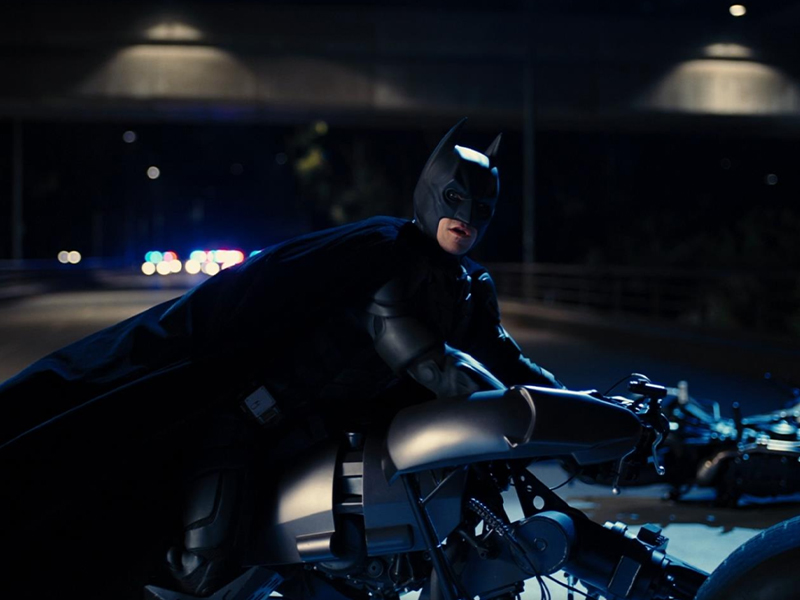
Image courtesy of Warner Bros
Unlike Superman or Wonder Woman, Batman can’t fly. Unlike the Flash, he can’t run to a crime scene in less than a second. His only superpower, as the joke in the Justice League movie goes, is that he’s rich. So it makes sense that, over the years, Bruce Wayne’s megabucks should have been lavished on a wide variety of response-time-reducing chiropteran vehicles, from 1966’s fin-tastic Adam West Batmobile (based on the never-produced Lincoln Futura Concept) to the roaring, red-bathed muscle car that Robert Pattinson drove in last year’s The Batman.
However, nothing in Bat-history has come close to the sheer tarmac-tearing coolness of the Batpod in Christopher Nolan’s 2008 masterpiece The Dark Knight, a two-wheeled beast that emerged from the wreckage of his tank-like Tumbler, thundered through the streets of Gotham (actually Chicago’s actual streets), caused a semi-truck to flip trailer-over-cab, and played chicken with Heath Ledger’s Joker.
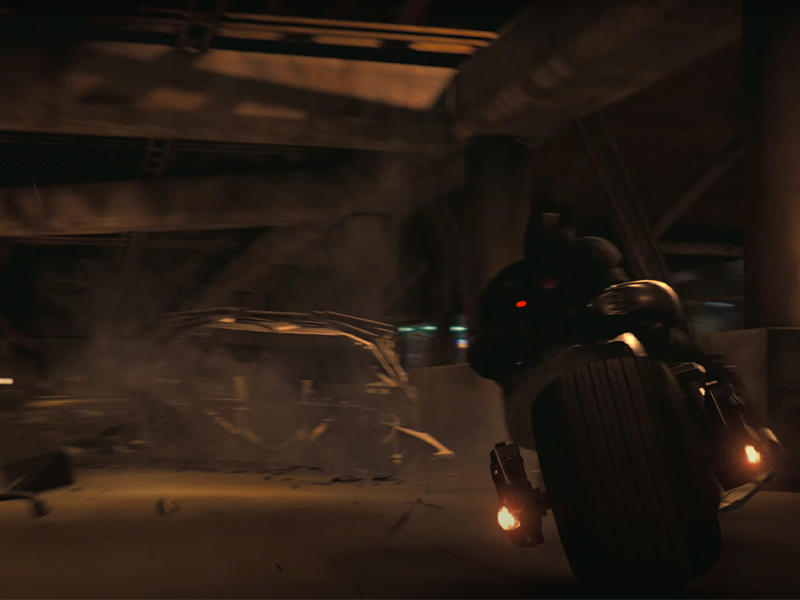
Image courtesy of Warner Bros
The Batpod represents the peak of an era in the franchise that’s worth examining. An era nestled between that ridiculous single-seated thing in 1997’s Batman and Robin and Batman V Superman’s Mad Max-esque wheels in 2016. An era when functionality and form went hand in hand. Nolan asked a question that no other filmmaker had previously considered: what would Batman’s vehicles look like if he could build them for real?
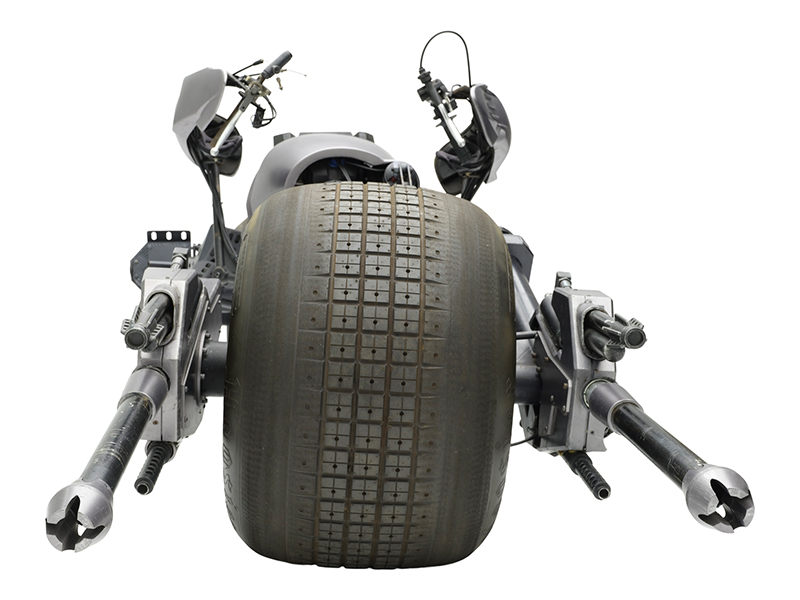
Batman’s (Christian Bale) Batpod
Batman Begins (2005): Tumbler Time
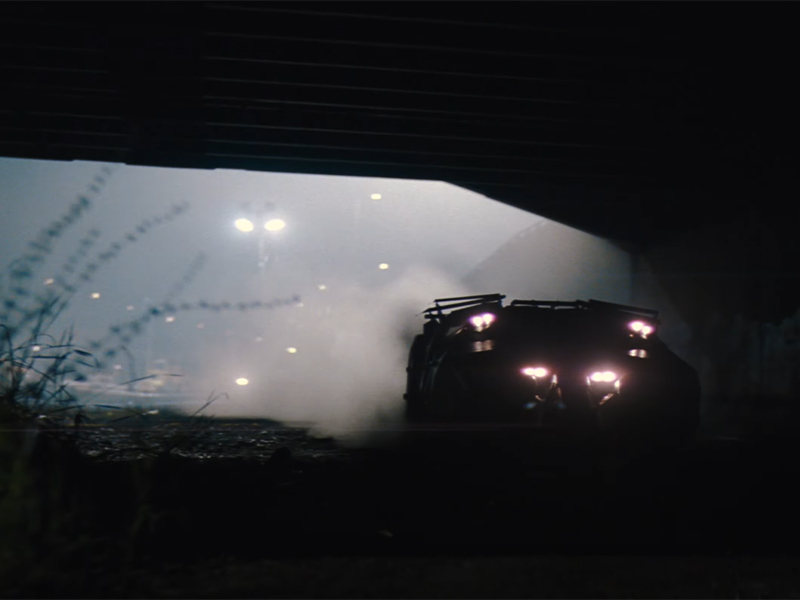
Image courtesy of Warner Bros
When first taking on the task of reviving Batman as a cinematic franchise, Nolan decided that before conceptualising anything else for the film, he and production designer Nathan Crowley should first nail the Batmobile.
“I felt it was very important to design the Batmobile first,” the director said in 2005. “I had a very specific idea in my head about a contemporary approach to a Batmobile, and our approach to it would tell everybody about our approach to the whole film, which is a more grounded reality.”

Image courtesy of Flashback Film Making
The pair of them spent weeks model bashing, iterating and evolving their design from a Play-Doh model that Nolan had sculpted (which “looked like a croissant” he joked) into the slick but sturdy blend of Humvee, Lamborghini and stealth bomber that barrelled onto our screens.
Constructed in England by a team overseen by special-effects maestro Chris Corbould, the resulting “Tumbler” Batmobile was a real car that could actually be driven. “I want this to be a mean machine. I want this to perform,” Corbould recalled Nolan instructing him.
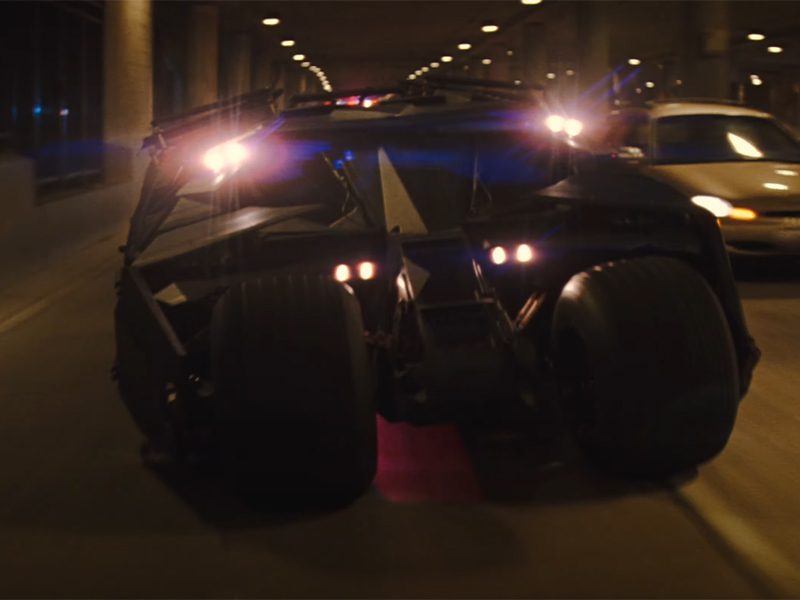
Image courtesy of Warner Bros
Fifteen-feet long, nine-foot-four wide and weighing 2.5 tonnes, the Tumbler really is a monster of a vehicle, made even more complicated for its creators by the fact that it has no front axle. However, its two independent front wheels did help it manoeuvre on the roads, especially while turning. Featuring a jet-powered engine, with aerofoils to improve velocity, it was also a car impressive capable of surviving a stunt jump, unlike most regular vehicles.

Image courtesy of Flashback Film Making
It certainly met Nolan’s brief for “a contemporary approach,” and he couldn’t quite believe how close it looked to his and Crowley’s final design. “They were so faithful to our original kit-bash,” he marvelled. “It was a strange thing to look at.”
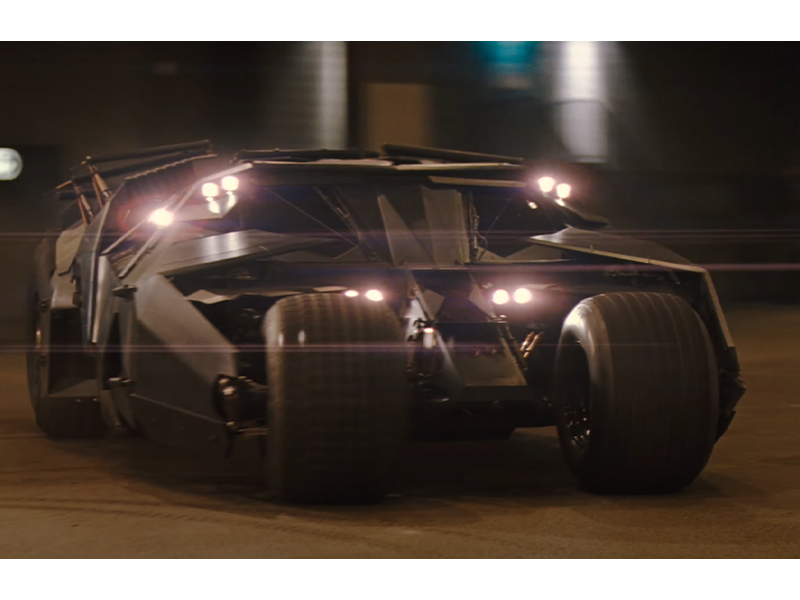
Image courtesy of Warner Bros
The Dark Knight (2008): Enter the Batpod
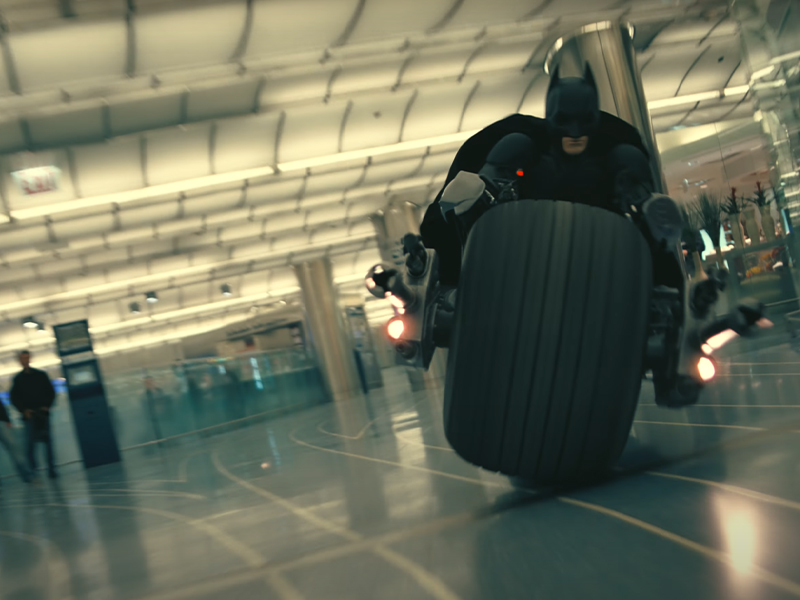
Image courtesy of Warner Bros
On returning to Gotham, Nolan knew he could not simply bring back the Tumbler, and together with Crowley, designed a sleeker, more nimble alternative mode of transport for Christian Bale’s Dark Knight. Just like the first film’s Batmobile, this fresh take on the ‘Batcycle’ had to be built for real, and ridden for real, too.
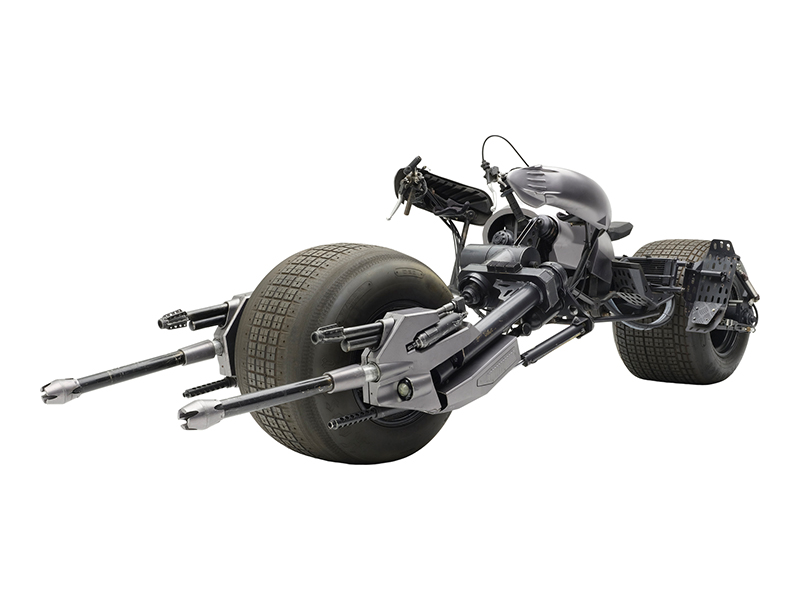
Batman’s (Christian Bale) Batpod
Building it for real turned out to be the simpler task, relatively speaking. Once again, Corbould’s team rose to the challenge, constructing the Batpod around a Honda 750 engine, and giving it massive 31” Hoosier racing tyres, which obviously had to match the Tumbler’s for girth.
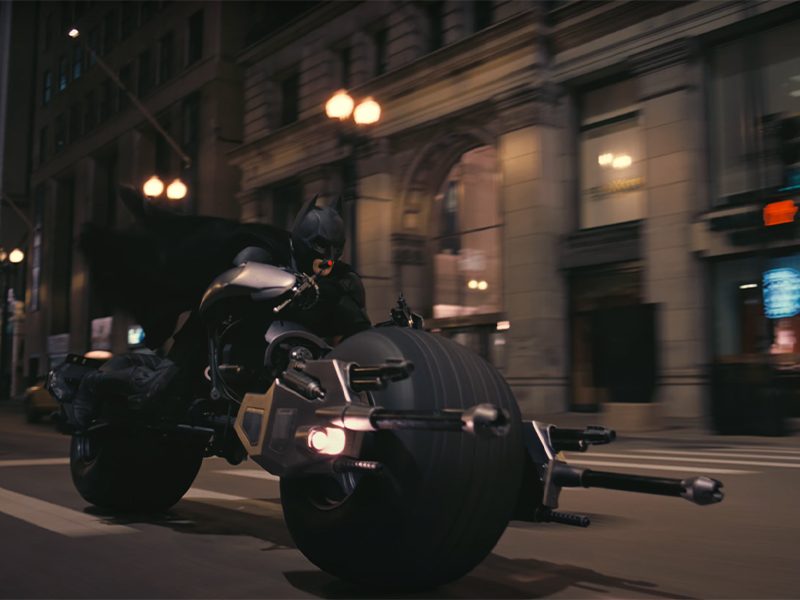
Image courtesy of Warner Bros
However, getting someone to pilot it effectively was a whole different challenge. “We don’t call it a bike because it doesn’t behave anything like a bike,” said Corbould during production in 2007. “The Batpod is in some ways more difficult than the Batmobile because it is very difficult to ride. Initially it was fairly easy to come off it.”
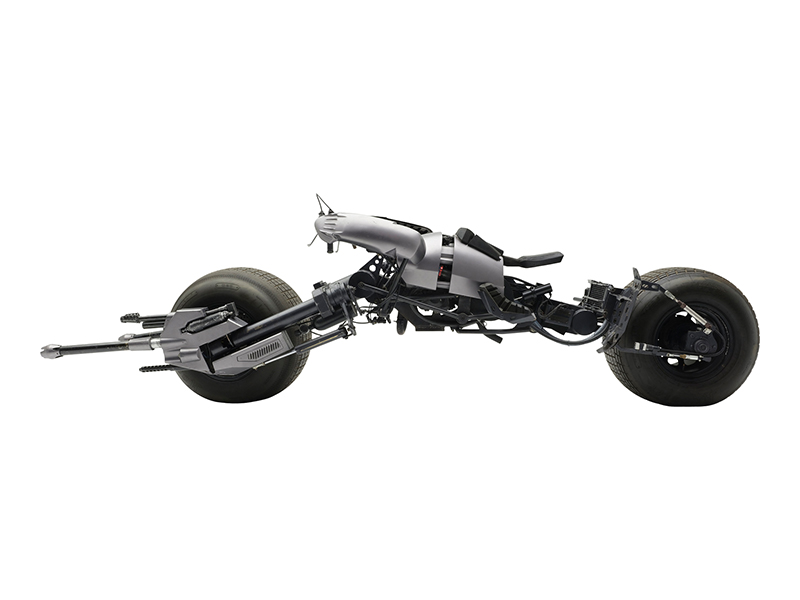
Batman’s (Christian Bale) Batpod
Fortunately, stunt rider Jean-Pierre Goy, who Corbould had worked with a few times previously, was able to master this beast. “You have to get it out of your mind that you’re riding a bike,” explained Corbould. “We had other people who tried to ride it and just didn’t get on with it, whereas Jean-Pierre – who, if not the greatest bike rider in the world, is one of the best – totally got in the right mindset and said, ‘Right, I’m not riding another bike until I’ve finished this.’ And that’s what he did. He concentrated on riding this machine with unique handling qualities. I’d be lying to say it was easy to ride, but it looks spectacular when it is being ridden.”
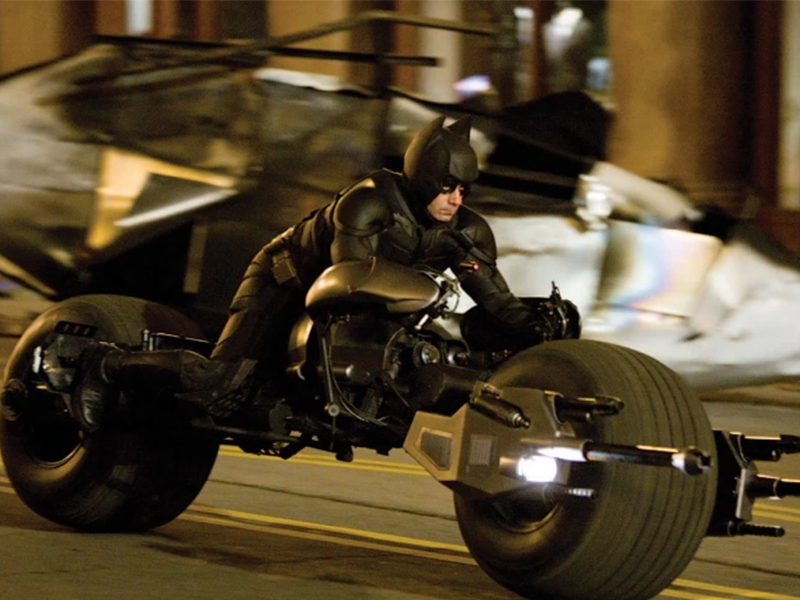
Image courtesy of TIME
The Dark Knight Rises (2012): The Bat takes wing

Image courtesy of Warner Bros
By the Nolan-Batman’s third and final outing, the only way was up. But it wasn’t enough to have the Dark Knight pilot a helicopter (as he does in the 1966 Batman), or even a high-tech jet (as he does in the 1989 Batman). This flying Bat-vehicle had to be something entirely new.
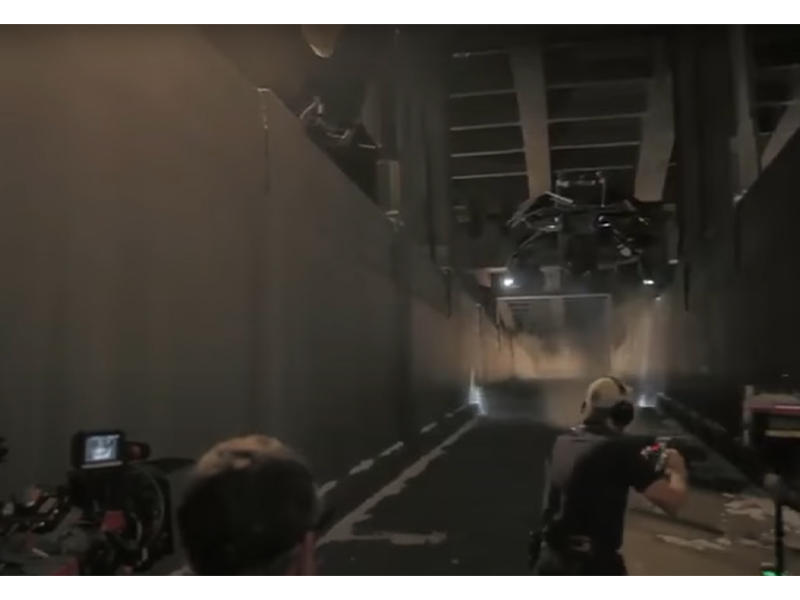
Image courtesy of Gizmodo
“We took the approach that this would be a credible military project,” said Crowley in 2012. “From a design standpoint, the most important thing was that The Bat fit into the same family as our Batmobile.” Large, black and imposing, it certainly does that, blending elements from the Harrier jump jet with the Boeing V-22 Osprey and AH-65 Apache helicopters. Nolan conceived it, he said, as “a double-bladed chopper, where the rotors are configured underneath the vehicle and the air is channelled down through the vents above.”
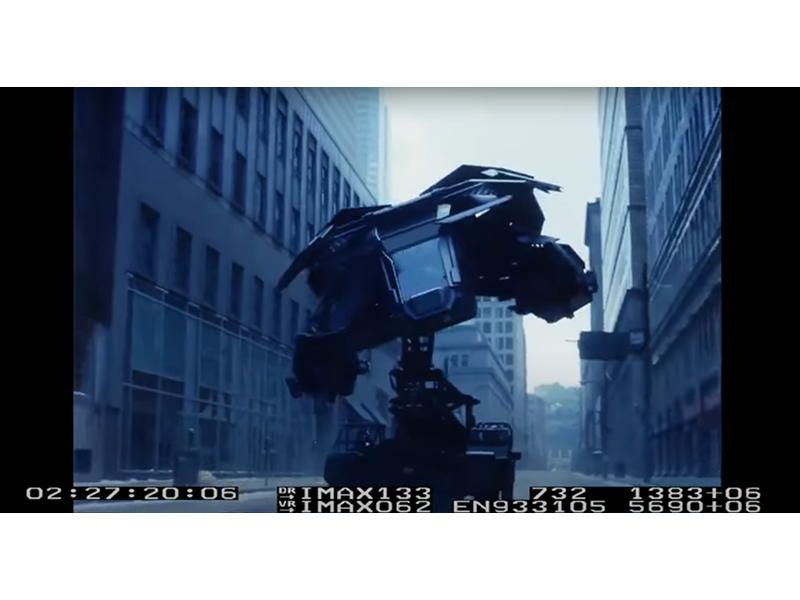
Image courtesy of Gizmodo
The final vehicle was 30 feet long, 17 feet wide and weighed around 3,000 pounds, with working rotors, flaps and lights. But unlike the Tumbler and the Batpod, it didn’t work for real. Of course, Nolan being Nolan, it was not an option to rely on CGI to make his hefty Bat fly. So Corbould had to employ “a variety of different methodologies,” he explained, including supporting the vehicle on wires, running it along high lines, suspending it from cranes and helicopters, and mounting it on a hydraulic-platform vehicle.
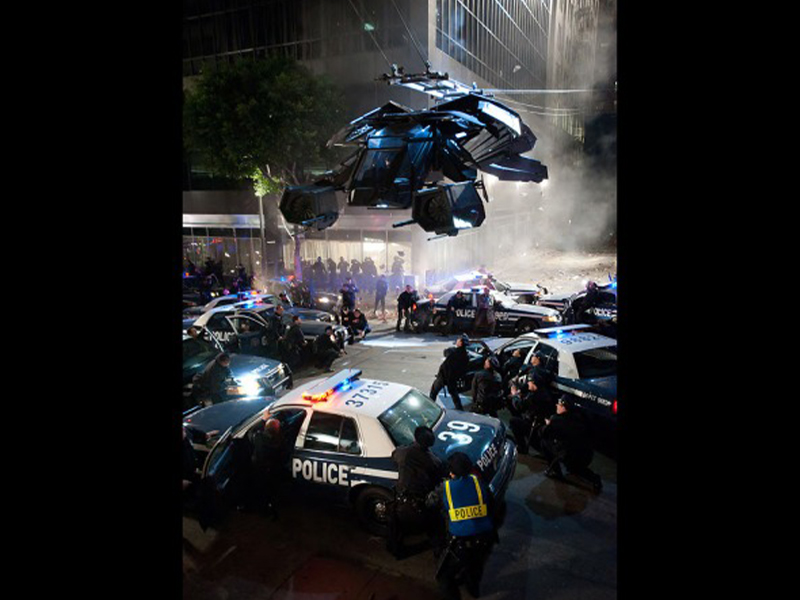
Image courtesy of TIME
The results were certainly impressive. To quote Morgan Freeman’s Lucius Fox in the film, “Nothing like a little air superiority…”
Join us on June 28 – 30, 2023 when the lots will begin to close in our three day live auction. And remember to get those bids in early if you want a shot at picking up some incredible pieces of entertainment history.
Check out the full catalog here now.
For all the latest from Propstore, including upcoming auctions and Buy now exclusives, follow us on Instagram, Facebook, Twitter, and now TikTok! For our full archive of past and current sales, head over to propstore.com now.